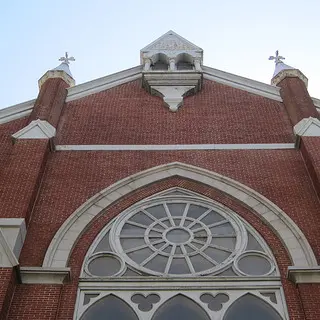
11 Most Endangered Historic Places
Metropolitan AME Church
Since 1821, when a group of free and enslaved African Americans formed its congregation, Metropolitan AME Church, the national cathedral of African Methodism, has been much more than a spiritual sanctuary. A major landmark of African American heritage and one of the most important religious institutions in the United States, Metropolitan AME's red brick Victorian Gothic-style church, completed in 1886, was constructed by donations – large and small – from AME congregations across the country. Their goal was to establish a permanent presence for the AME denomination just a short distance from the White House and the U.S. Capitol in order to pressure the federal government for equal treatment of African American people.
Since its inception, Metropolitan AME has been a bastion of advocacy for human rights, and its congregation has been involved in this country's seminal struggles, including the fight for abolition of slavery and the civil rights movement. In segregated Washington, Metropolitan AME's stained-glass sanctuary was one of the largest meeting places available to an integrated audience and, therefore, attracted prominent speakers, including President Taft and First Lady Mrs. Eleanor Roosevelt and, later, Dr. Dorothy Height, Rev. Gardner Taylor, and Bishop Desmond Tutu. It was here that the funeral of congregant Frederick Douglass was held in 1895, and where mourners said goodbye to Rosa Parks a century later. This African American institution was the first to be included as an official host of a presidential inauguration event during the two terms of President William Jefferson Clinton.
Metropolitan AME Church also is nationally significant as the founding sponsor and home of the Bethel Literary and Historical Association, a highly influential educational institution that sponsored programs with nationally-known speakers, including Carter G. Woodson, Mary Church Terrell, Ida B. Wells, Archibald H. Grimke, and Booker T. Washington. A leading cultural institution in the nation's capital, the association became the model for other literary societies that sought to preserve the legacy of African Americans.
Metropolitan is the oldest AME church in the District of Columbia and, along with Philadelphia's famed Mother Bethel, remains one of the most prominent AME churches in the country. The church is known for its 29 stained glass windows, which chronicle the AME church's phenomenal growth during a period of racial oppression.
From anti-slavery leadership in the mid-19th century to AIDS education and voter registration projects today, Metropolitan AME Church has been not just a major center of worship but an institution at the forefront of the civic, cultural, and intellectual life of African Americans.
Over the years, Washington's downtown district grew up around Metropolitan AME. Eventually walled in on three sides by large commercial development projects, the church suffered numerous structural cracks caused by vibrations during the adjacent construction.
The Metropolitan AME Church was included on the Trust's 11 Most Endangered Historic Places list for 2010.
Stay connected with us via email. Sign up today.
Related Stories
-
Preserving Black Churches 35 Historic Black Churches Receive $4 Million Investment -
African American Cultural Heritage Action Fund 9 Historic Civil Rights Sites: Commemorating the March On Washington
Explore More Places
Announcing the 2025 list of America’s 11 Most Endangered Historic Places.
See the List



